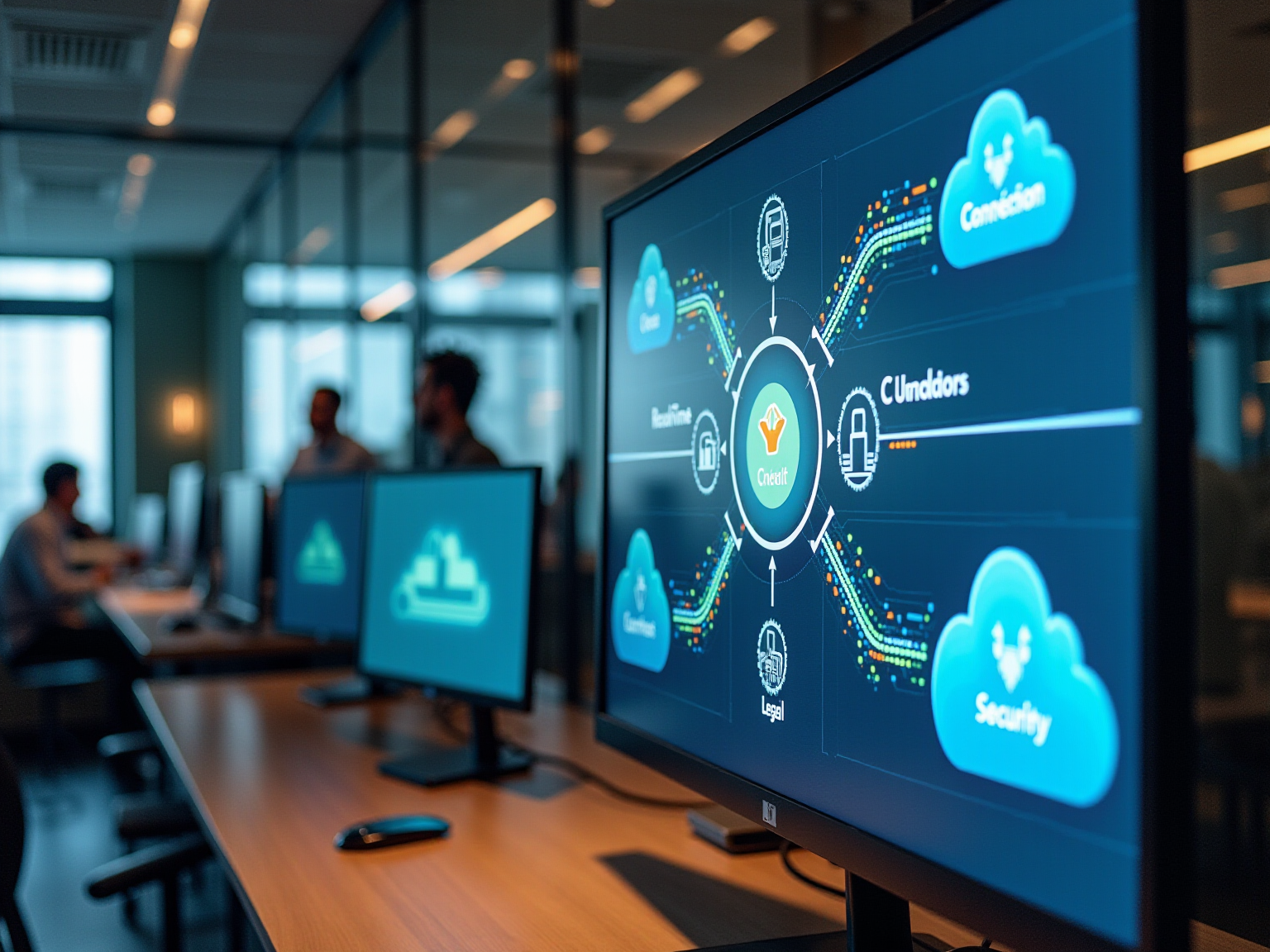Overview
In today’s rapidly evolving landscape, modernization is not just an option; it’s a necessity for banking and healthcare. Our article, “10 Legacy Modernization Examples Transforming Banking and Healthcare,” delves into the strategies that are revolutionizing these sectors, enhancing operational efficiency and service delivery. We explore cutting-edge technologies such as cloud solutions, microservices, and data analytics, which not only bolster security and reduce costs but also empower organizations to adapt to shifting market demands and elevate customer experiences.
What’s holding your organization back from achieving these transformative benefits? By embracing these modernization strategies, we can help you navigate the complexities of today’s environment, ensuring you remain competitive and responsive to your customers’ needs. We invite you to explore these examples and consider how integrating these technologies can provide significant value to your operations. Together, let’s lead the charge towards a more efficient and customer-centric future.
Introduction
In today’s rapidly evolving technological landscape, we are confronted with a pressing need to modernize our legacy systems. The integration of advanced solutions—such as cloud platforms, microservices, and blockchain—has become a necessity for survival and growth across various sectors, from banking to healthcare. Our hybrid integration platform stands at the forefront of this transformation, offering the essential tools required to bridge the gap between outdated systems and modern demands. By enhancing operational efficiency, improving security, and fostering innovation, our integration strategies empower businesses to navigate the complexities of digital transformation. This journey towards modernization is not merely a technological upgrade; it is a strategic imperative that will shape the future of service delivery and customer experience.
What’s holding your team back from embracing these advancements? Let us guide you through this essential transition.
Avato: Transforming Legacy Systems with a Secure Hybrid Integration Platform
We have skillfully designed our hybrid connection platform to link traditional frameworks with contemporary technologies, ensuring a secure and effective merging process. This platform empowers organizations to modernize their operations without sacrificing security or performance. By facilitating numerous connection scenarios, we unlock the potential of existing systems while reducing downtime and operational risks. With our commitment to 24/7 availability and real-time monitoring, we ensure that essential connections remain dependable and efficient.
Founded by a group of enterprise architects dedicated to solving complex problems, we embody a deep commitment to architecting the technology foundation required for rich, connected customer experiences. In 2025, as organizations confront an increasingly intricate threat environment, the demand for secure unification solutions has never been more urgent. Statistics indicate that enterprises typically manage around 15,000 exposures across their environments, underscoring the importance of a robust integration strategy. We tackle these challenges directly by offering a future-proof technology stack that enhances operational capabilities while lowering expenses. Our platform specifically reduces vulnerabilities through sophisticated security functionalities and ongoing surveillance, ensuring organizations can securely incorporate their older infrastructures.
The platform’s capability to streamline intricate project implementations has garnered commendation from industry leaders, solidifying its role as an essential resource for legacy modernization examples and successfully modernizing older technologies. As William Jepma noted, “This Cybersecurity Awareness Month, we must continue to better understand the increasing complexity and dynamic nature of cloud environments relative to on-premises alternatives.” By utilizing our platform, organizations can confidently navigate the complexities of merging disconnected outdated frameworks, ensuring they remain competitive in the rapidly evolving banking and healthcare industries, where trends like digital banking and telehealth are transforming service delivery. Our support for 12 levels of interface maturity further enhances the ability to balance the speed of incorporation with the sophistication needed to future-proof technology stacks.
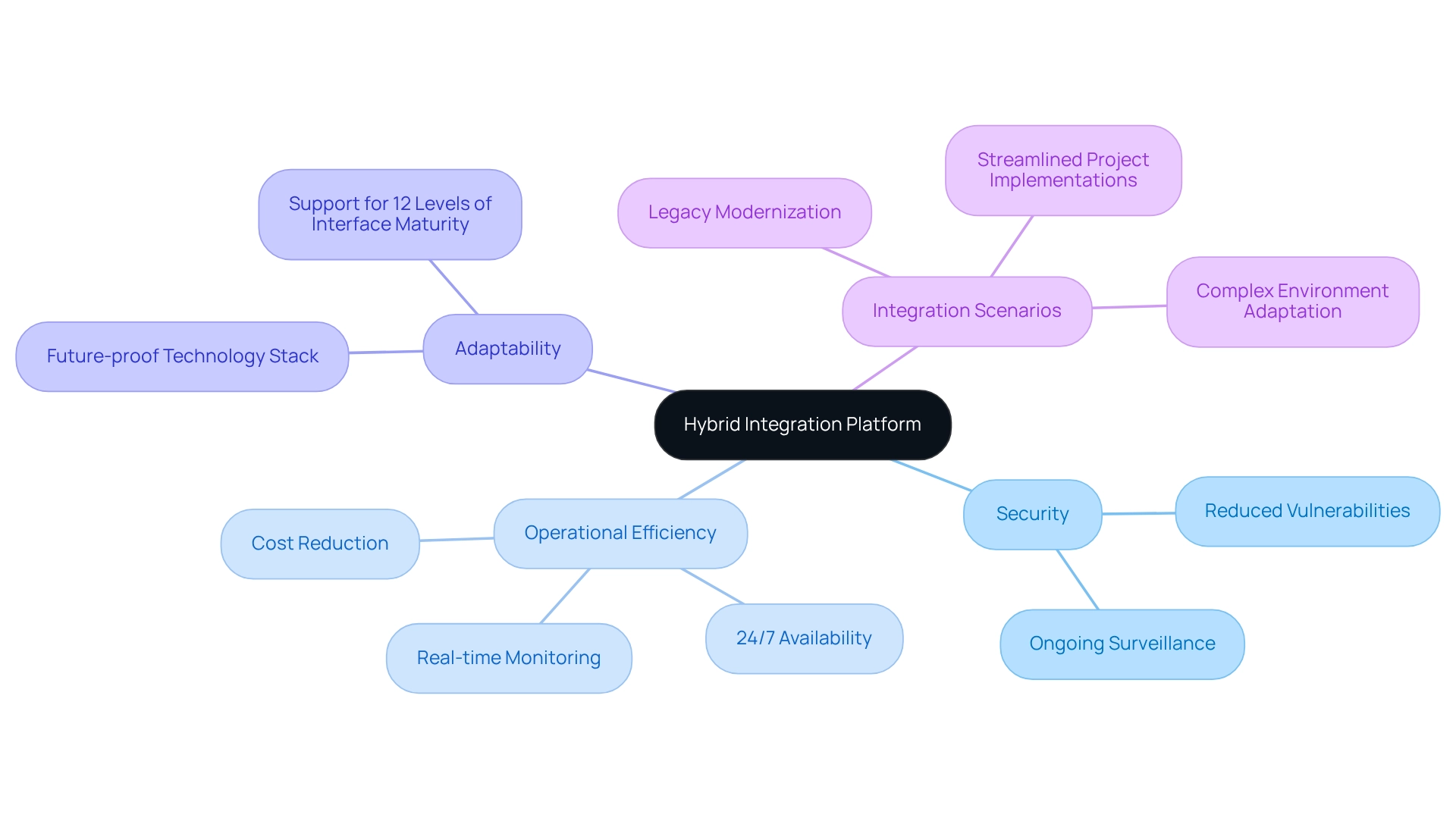
Cloud Banking Solutions: Enhancing Security and Efficiency in Legacy Systems
Cloud banking solutions are revolutionizing the financial sector, significantly enhancing security and operational efficiency. The legacy modernization examples of transferring outdated infrastructures to the cloud can lead to substantial reductions in maintenance costs, improved data accessibility, and ensured compliance with stringent regulatory standards.
Advanced security features, including encryption and multi-factor authentication, are integral to these cloud solutions, safeguarding sensitive financial data against emerging threats. This strategic transition not only streamlines operations but also empowers us to innovate swiftly, enabling the delivery of superior services to our customers.
As Gustavo Estrada noted, ‘Avato has the ability to simplify complex projects and deliver results within desired time frames and budget constraints,’ underscoring the effectiveness of cloud solutions in modernizing banking operations. Our dedicated hybrid integration platform plays an essential role in this transformation, facilitating seamless data integration that future-proofs our operations.
By utilizing these methodologies, we can enhance our operational capabilities and security measures. For instance, several banks have successfully showcased legacy modernization examples by migrating their outdated systems to the cloud with Avato’s assistance, resulting in improved efficiency and reduced operational expenses.
This trend is further highlighted by the projected spending on public cloud services, expected to reach $1.35 trillion by 2027, emphasizing the growing importance of cloud solutions in the banking sector. Moreover, the integration of generative AI is enhancing customer experience and operational efficiency, marking a significant shift in how we approach problem-solving and innovation.
What’s holding your team back from embracing this transformation?
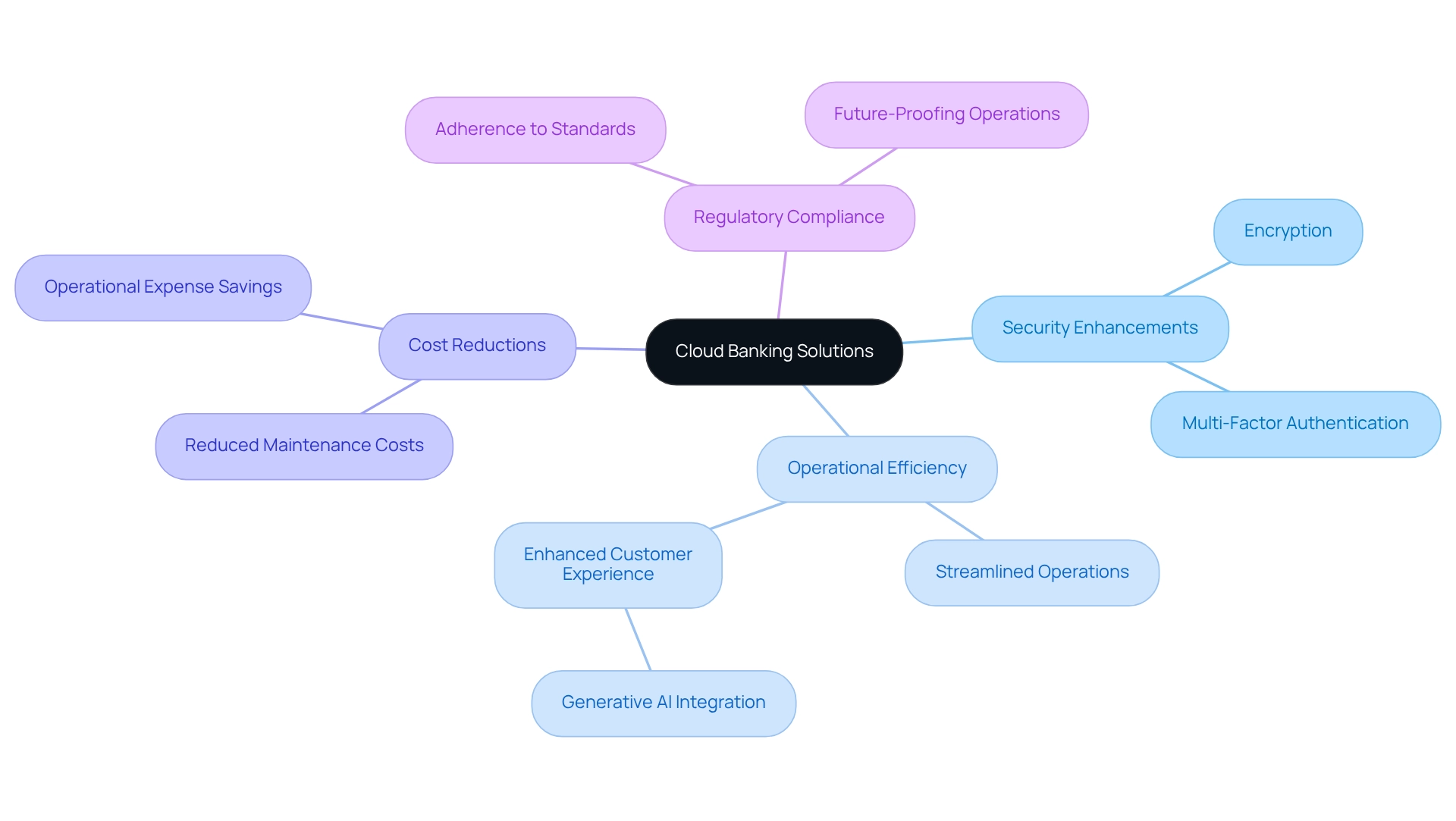
Microservices in Healthcare: Revolutionizing Legacy Application Modernization
Microservices architecture is fundamentally transforming how we approach application modernization in healthcare. By deconstructing monolithic applications into smaller, independent services, we can significantly enhance scalability and interoperability while accelerating the deployment of new features. This modular approach allows us to respond more swiftly to evolving healthcare demands, ultimately improving patient outcomes. Furthermore, microservices strengthen our connections with advanced technologies, such as artificial intelligence and data analytics, thereby boosting the capabilities of our healthcare frameworks.
To optimize performance, we must begin with a comprehensive evaluation of our existing frameworks. Identifying areas that would benefit most from modernization enables us to develop a plan that aligns with our institutional goals and customer needs. Statistics indicate that the adoption of microservices in healthcare organizations is on the rise, with many reporting improved application performance and reduced operational costs. We guarantee round-the-clock availability for essential integrations, which is vital for healthcare providers relying on reliable performance. Successful legacy modernization examples illustrate how healthcare providers have leveraged microservices to modernize older applications, achieving enhanced agility and efficiency. For instance, organizations that have embraced cloud-based solutions report improved data accessibility and collaboration among healthcare providers. Involving stakeholders effectively and demonstrating new business processes are crucial actions in charting a path to success in this modernization journey.
As healthcare IT leaders support this architectural change, the consensus is clear: microservices not only simplify outdated modernization but also empower us to thrive in an increasingly digital environment. Tressa Springmann, Chief Information and Digital Officer at LifeBridge Health, emphasizes this shift, stating, ‘The cat’s out of the bag here on consumerism. Patients are going to drive us based on their comfort and utilization of technology.’ This insight underscores our necessity to adopt modern technologies to meet patient expectations and enhance care delivery.
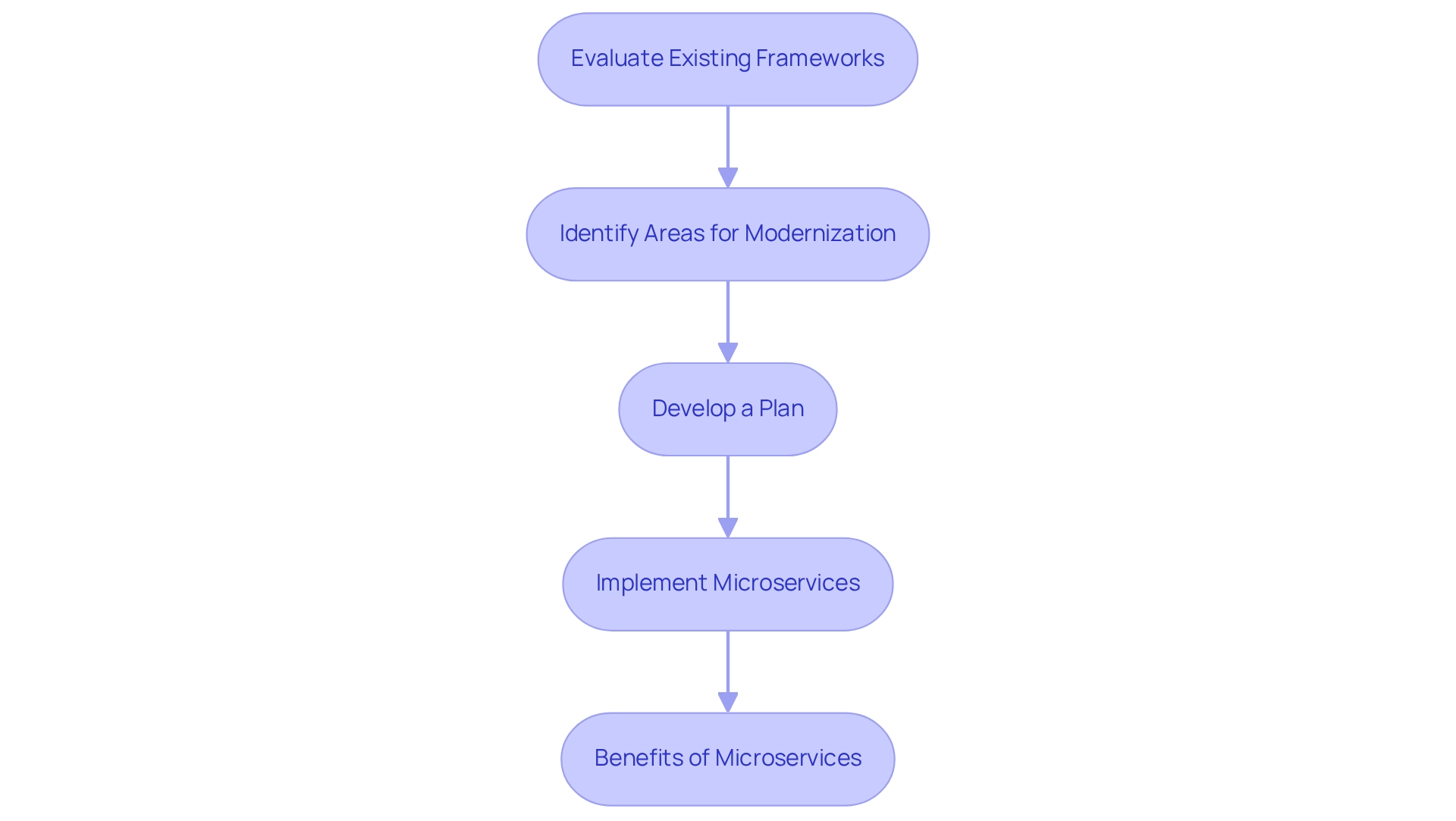
Retail Automation: Modernizing Legacy Systems for Enhanced Customer Experience
Retail automation stands as a pivotal force in modernizing outdated frameworks, significantly enhancing customer experiences, particularly within the banking sector. By harnessing advanced technologies such as artificial intelligence, machine learning, and the Internet of Things (IoT), we can optimize operations, personalize customer interactions, and refine inventory management processes. These modern frameworks facilitate real-time data analysis, empowering us to swiftly adapt to market trends and evolving customer preferences. This agility not only boosts operational efficiency but also cultivates customer loyalty by delivering seamless and engaging shopping experiences.
Our hybrid connection platform, Avato, is instrumental in this transformation, simplifying the integration of isolated legacy systems and enabling banks to implement retail automation effectively. The platform accommodates 12 levels of interface maturity, allowing organizations to balance integration speed with the sophistication necessary to future-proof their technology stack. As Gustavo Estrada notes, our solution is lauded for its ability to simplify complex projects and deliver results within desired time frames and budget constraints, making us an ideal partner for banking IT managers navigating modernization challenges. Additionally, Tony LeBlanc from the Provincial Health Services Authority praised our professionalism and expertise, reinforcing our reputation as a trusted partner in the industry.
Moreover, with 57% of businesses utilizing AI/ML to enhance customer experience, the influence of retail automation technologies on customer satisfaction and retention becomes increasingly apparent. This underscores the necessity of integrating these innovations into examples of legacy modernization. The case analysis of eduMe’s collaboration with Uber illustrates the broader theme of investing in technology to elevate customer satisfaction, emphasizing the critical need for legacy modernization examples in the banking and healthcare sectors. As businesses progressively adopt retail automation technologies, the potential for enhanced customer experiences and operational efficiencies is unmistakable.

API Management in Government: Streamlining Legacy System Integration
API management is essential for transforming outdated technologies within government agencies. By establishing standardized interfaces for data exchange, we enable seamless communication across diverse platforms, significantly enhancing service delivery and operational efficiency.
Our Hybrid Integration Platform empowers government organizations to maximize the value of their legacy infrastructures by utilizing legacy modernization examples while embracing modern technologies, ultimately leading to reduced costs. This connectivity facilitates real-time monitoring and alerts regarding performance, fostering greater citizen engagement and satisfaction.
Furthermore, effective API management is vital for maintaining compliance with security and regulatory standards, a critical requirement in the public sector. As organizations navigate the intricacies of digital transformation, managing API traffic effectively becomes increasingly crucial.
Seamless integration for stakeholders is key to optimizing digital transformation investments, and understanding what digital transformation means for your organization is essential for success. By adopting contemporary technologies through our API management solutions, we can implement legacy modernization examples to tackle the challenges posed by outdated platforms head-on.

IoT Solutions in Manufacturing: Modernizing Legacy Systems for Greater Efficiency
IoT solutions are fundamentally revolutionizing the manufacturing industry by providing legacy modernization examples that modernize outdated frameworks and significantly enhance operational efficiency. By integrating IoT devices with our existing machinery, we can gather real-time data on equipment performance, which is crucial for implementing predictive maintenance strategies. This proactive approach minimizes downtime and optimizes resource management, leading to substantial productivity gains and cost reductions. Furthermore, IoT technologies enhance supply chain visibility, allowing us to swiftly adapt to changing market demands.
As we increasingly adopt IoT solutions, we report a remarkable 65% reduction in data transmission requirements and a 73% decrease in analysis latency compared to traditional cloud-only approaches. This shift not only enhances our operational efficiency but also positions us to remain competitive in a rapidly evolving landscape. Moreover, the urgency of modernizing outdated infrastructures is underscored by legacy modernization examples, particularly given the potential loss of 2.4 million manufacturing jobs due to the skills gap, highlighting the necessity for innovative solutions.
Gustavo Estrada, a client, remarked, “The company has streamlined complicated projects and provided outcomes within expected timelines and budget limitations,” demonstrating how comparable unification efforts can yield operational efficiency in manufacturing. Our hybrid unification platform, with its robust analytics capabilities, ensures continuous monitoring of system performance, enabling us to optimize operations and enhance customer experiences. The insights gained from IoT integration can also be applied to the banking sector, where operational efficiency and adaptability are equally critical.
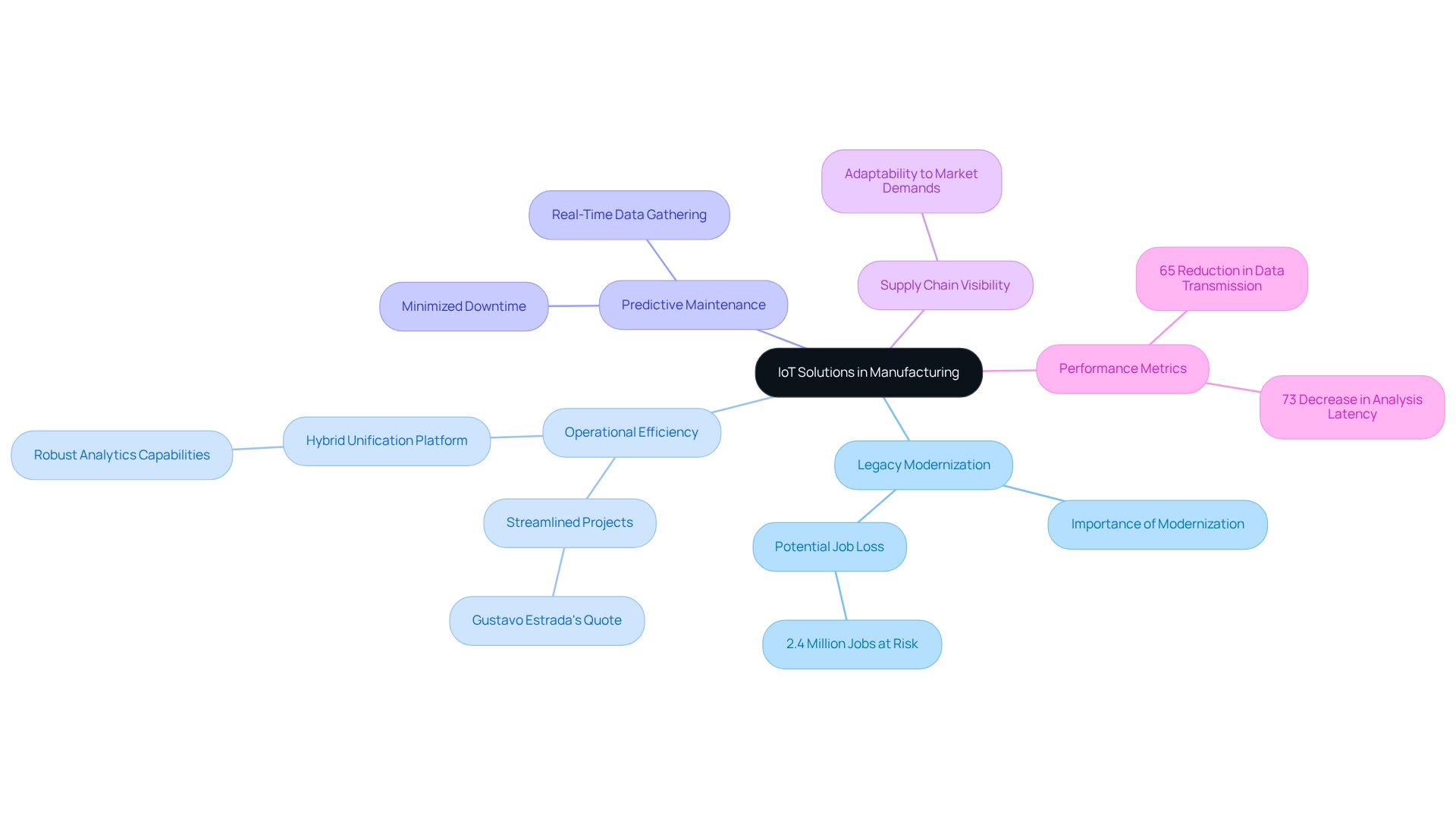
Data Analytics in Financial Services: Transforming Legacy Applications
Data analytics is revolutionizing traditional applications in the financial services sector, empowering us to fully leverage our data assets. By modernizing outdated frameworks to integrate advanced analytics features, we can uncover deeper insights into customer behavior, enhance risk management, and significantly improve operational efficiency. This transformation enables more informed decision-making and allows us to deliver personalized services tailored to our clients’ needs.
Furthermore, the application of data analytics strengthens our compliance with regulatory requirements, equipping us to adeptly navigate the complexities of the industry. As Tim O’Reilly aptly noted, “We’re entering a new world in which data may be more important than software,” highlighting the critical role of data in fostering innovation and competitive advantage.
Our hybrid integration platform exemplifies this shift by facilitating the seamless incorporation of advanced analytics into legacy infrastructures, thereby reducing costs and streamlining complex integrations. This platform also provides real-time monitoring and alerts on performance, enhancing security and mitigating risks associated with data breaches, which continue to affect 66% of organizations.
The impact of advanced analytics on the performance of older systems is profound; it transforms operational capabilities and positions financial services firms to adapt to evolving market demands. Successful legacy modernization examples illustrate how organizations have effectively harnessed our platform to modernize their legacy applications, leading to improved efficiency and reduced costs.
Moreover, understanding the four types of data analytics—descriptive, diagnostic, predictive, and prescriptive—offers comprehensive insights into how analytics can transform traditional applications. As the financial landscape continues to evolve in 2025, strategically upgrading our older frameworks through data analytics will be essential for maintaining a competitive edge.
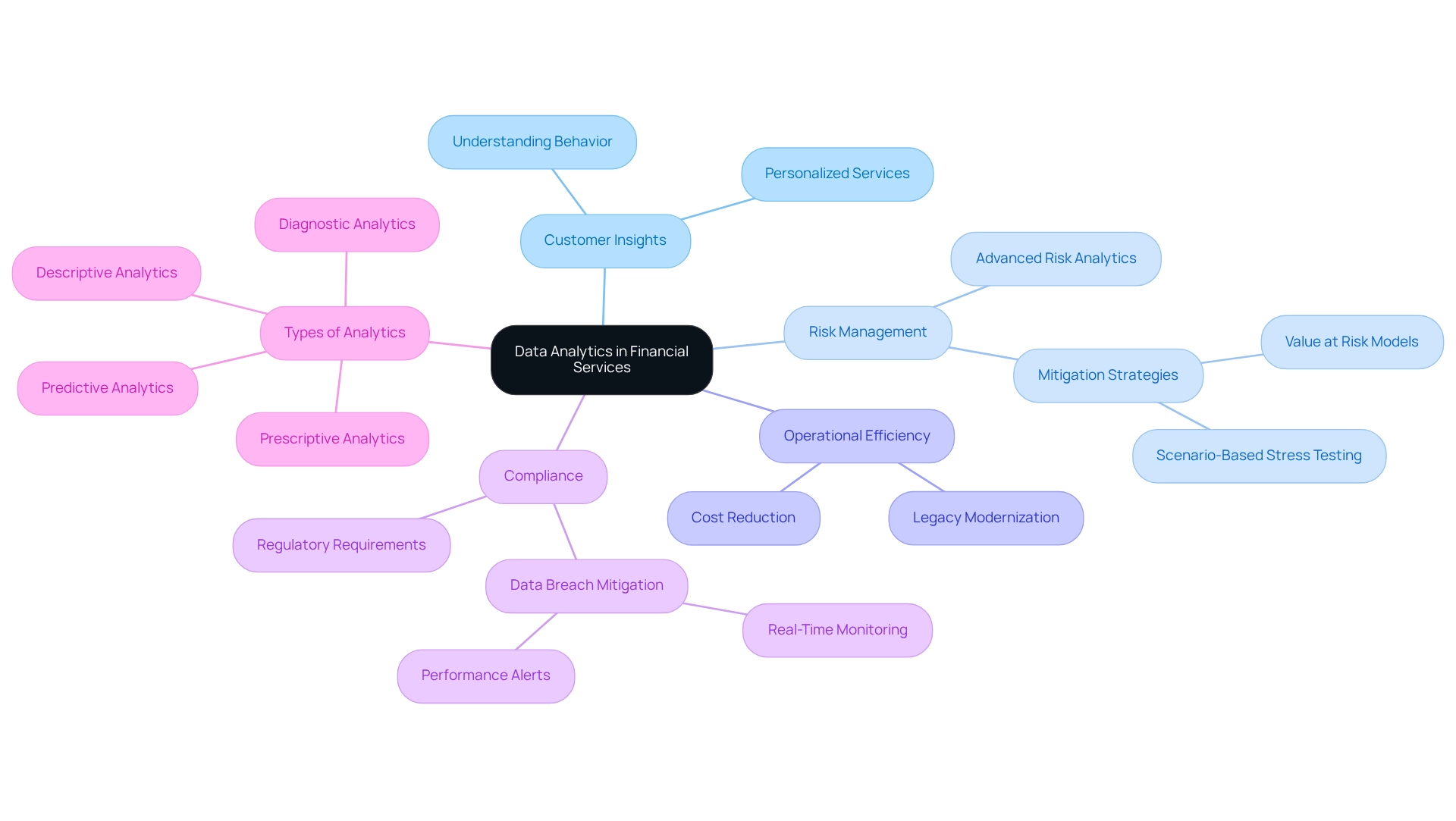
Cloud Platforms in Education: Modernizing Legacy Systems for Improved Learning
Cloud platforms are providing legacy modernization examples that are revolutionizing the modernization of legacy systems across various sectors, including banking. By transitioning to cloud-based solutions, we significantly improve accessibility, collaboration, and resource management. This migration enables the incorporation of cutting-edge tools and technologies, creating a more efficient operational environment. Furthermore, cloud platforms offer the scalability necessary to adapt to fluctuating demands and evolving market conditions, empowering institutions to effectively meet future challenges.
At Avato, we play a crucial role in this transformation by providing a dedicated hybrid integration platform that simplifies complex integrations and enhances business value specifically for banking institutions. Our expertise in comprehensive data transformation services allows organizations to unlock isolated assets, significantly reduce costs, and future-proof their operations. The cloud computing market is driven by digital transformations and big data consumption, making cloud migration not just a trend but a strategic move towards enhancing operational efficiency. Notably, 80% of companies prioritize cloud cost management as their top concern, underscoring the financial benefits of adopting cloud solutions.
As highlighted by Zippia, the widespread adoption of cloud services across various industries further emphasizes the advantages that organizations can gain from this transition. Furthermore, the trends in multi-cloud architecture suggest that companies engaging in multi-cloud operations acknowledge advantages like enhanced reliability and adaptability, which are crucial as legacy modernization examples for updating outdated infrastructures. What’s holding your team back from leveraging these benefits? Let us help you navigate this transformation with confidence.
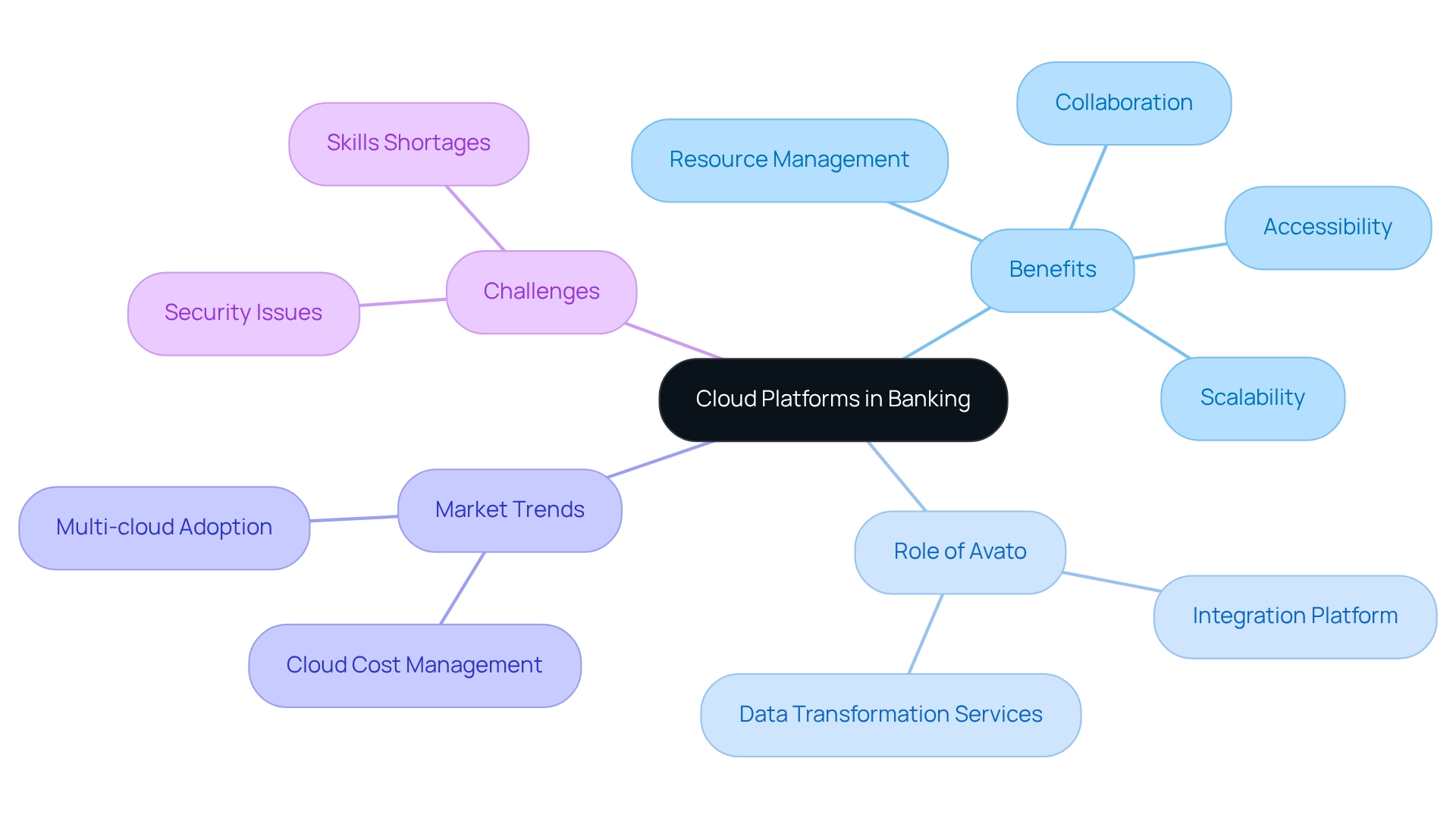
Containerization in Telecommunications: Agile Modernization of Legacy Applications
Containerization is rapidly becoming a vital strategy for modernizing outdated applications in the telecommunications sector. By encapsulating applications within containers, we can enhance agility, scalability, and operational efficiency. This approach streamlines the deployment and management of applications across diverse environments, effectively mitigating the challenges often associated with legacy technologies. Furthermore, containerization enables continuous integration and delivery (CI/CD) practices, empowering us to innovate swiftly and adapt to evolving market demands.
To successfully implement such modernization, we must conduct a thorough evaluation of current systems. By collaborating with our hybrid integration platform, we can devise a comprehensive strategy that aligns with our objectives and the changing needs of our customers. Our commitment to simplifying complex problems enhances the effectiveness of this strategic approach. This not only streamlines the management of intricate applications but also bolsters security and accelerates the transformation of outdated systems.
Statistics reveal that containerization simplifies the management of complex applications, leading to more straightforward updates and maintenance. For instance, the transition to containerized architectures has been shown to reduce the time and resources required for management, enabling us to seize emerging opportunities in a dynamic environment.
A significant case study underscores the impact of containerization on development cycles within telecom business support frameworks (BSS). This transformation has expedited service deployment and scaling, positioning us to respond more effectively to customer needs and market fluctuations. As industry leaders advocate for agile application management, the advantages of containerization for outdated applications become increasingly apparent, providing valuable legacy modernization examples that highlight its pivotal role in advancing modernization initiatives across various sectors, including banking and healthcare.
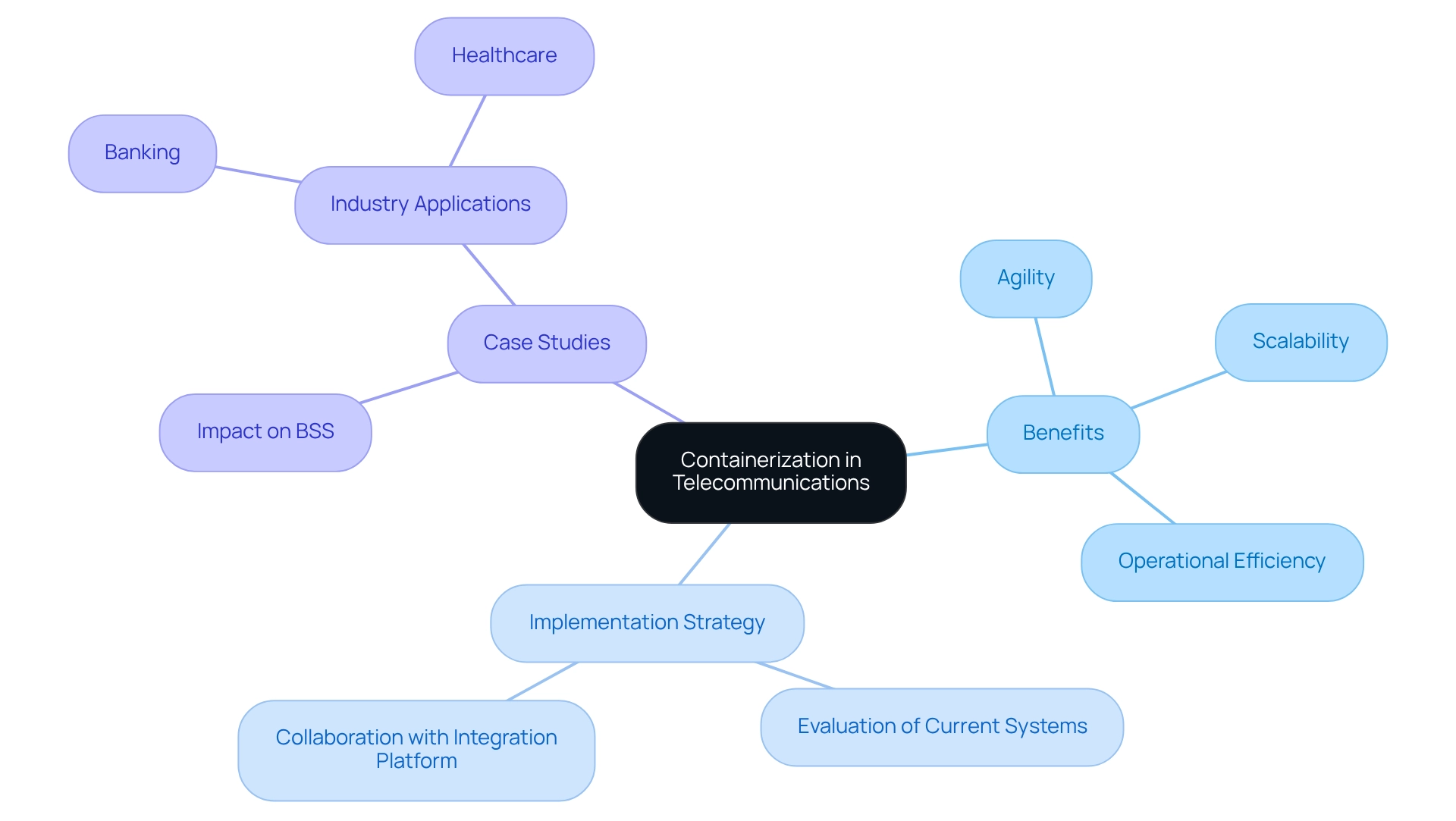
Blockchain in Logistics: Modernizing Legacy Systems for Enhanced Transparency
Blockchain technology is revolutionizing the logistics industry by modernizing outdated frameworks and significantly enhancing transparency throughout supply chains. By leveraging a decentralized and immutable ledger, we facilitate real-time tracking of goods and transactions, effectively minimizing fraud and strengthening accountability. This modernization empowers us to streamline our operations, foster improved collaboration with partners, and provide our customers with greater visibility into their shipments. Furthermore, the seamless integration of blockchain with existing frameworks allows us to capitalize on our established infrastructure while embracing innovative technologies. Notably, the implementation of blockchain contributes to a more sustainable supply chain by reducing waste and ensuring compliance.
The Hybrid Connectivity Platform, designed to address complex connection challenges, offers real-time monitoring and notifications regarding system performance—essential elements for maintaining operational efficiency and ensuring 24/7 uptime for critical linkages. Statistics reveal that organizations utilizing blockchain for legacy modernization examples experience enhanced operational efficiency and transparency, with Avato’s platform simplifying intricate integrations and significantly lowering costs. This positions blockchain as a vital component for logistics that is ready for the future. What’s holding your team back from embracing this transformative technology? Let us guide you in harnessing the power of blockchain to elevate your logistics operations.
Conclusion
The modernization of legacy systems is not merely a technological necessity; it is a strategic imperative that can define the future of industries ranging from banking to healthcare. By leveraging advanced solutions such as cloud platforms, microservices, and blockchain, we can enhance operational efficiency, improve security, and foster innovation. Our hybrid integration platform serves as a crucial enabler in this transformation, allowing businesses to seamlessly connect outdated systems with modern technologies while minimizing risks and downtime.
As we have highlighted throughout this article, the benefits of embracing these advancements are profound. From streamlining operations in financial services to revolutionizing patient care in healthcare, the integration of modern technologies facilitates a more agile and responsive approach to evolving market demands. Furthermore, the emphasis on security and compliance, particularly in sectors like government and logistics, underscores the critical need for robust integration solutions.
Ultimately, the journey towards modernization presents an opportunity for organizations to not only survive but thrive in an increasingly digital landscape. By adopting innovative integration strategies, we can unlock the full potential of legacy systems, enhance customer experiences, and maintain a competitive edge. The call to action is clear: embracing these advancements is essential for shaping a successful future in the face of rapid technological change.

